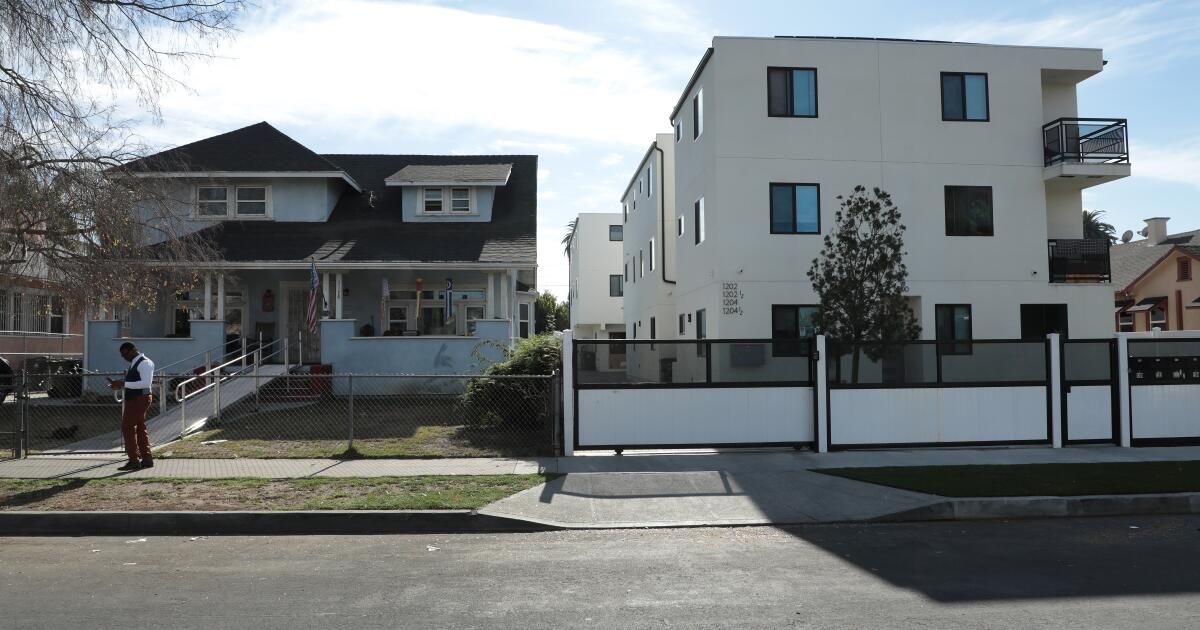Last October, the Los Angeles City Planning Department abandoned some of the region's most ambitious actions to address racial and economic segregation and confront the current affordability crisis. Two housing initiatives (an affordable housing overlay and expansions of the transit-oriented communities program) would have made it possible to build affordable and mixed-income housing in areas traditionally off-limits to multifamily housing.
But core components of these proposals have been withdrawn to protect single-family neighborhoods from development. This move puts Los Angeles at risk of violating California's fair housing law, missing housing production goals, and increasing displacement in its most vulnerable communities. The revised proposals are expected to be made public. this winter or spring, which will be followed by public disclosure. City leadership can and must reverse this harmful decision.
The original proposals were a response to state mandates aimed at speeding up housing construction to meet demand. Under these mandates, Los Angeles has made plans to add more than 450,000 new homes until 2029, including the modification of its zoning regulations through February 2025 to house some 250,000 more homes.
California law requires that development programs “affirmatively promote fair housing,”, meaning they should “overcome patterns of segregation and foster inclusive communities” and “address significant disparities in housing needs and access to opportunities.” In certifying the Los Angeles housing planThe state made clear that “rezoning multifamily housing into higher opportunity, low-density neighborhoods” was crucial.
The initial expansion of transit-oriented communities and the overlay of affordable housing did just that. In their original form, the two initiatives combined could have amounted to almost 200,000 new units throughout the city, with a focus on higher-income neighborhoods accessible to public transportation. Many of these communities are dominated by single-family homes, including Rancho Park, Westwood and Encino, among others.
But on October 26, the the planning department backed down, announcing that the programs would no longer be considered for single-family zoning land. This followed pressure from the Hancock Park Homeowners Association. and other ownership groups.
The change is significant and unfair. Our review of city data shows that Los Angeles' current development capacity (places where denser housing is already permitted, ignoring rezoning proposals) is disproportionately concentrated in low-income neighborhoods and communities of color. Data indicates that half of this capacity is located in the poorest neighborhood of Los Angeles, while the richest 10% of the city provides less than 1%.
We also find that the change to exclude single-family neighborhoods from rezoning cuts the capacity of the two programs by up to 82%, with the largest rollbacks in the city's wealthiest and whitest neighborhoods. Among census tracts where proposed zoning changes were reduced by 75% or more, the median household income is $111,000. In neighborhoods where the original proposals are still being considered, it is $67,500. Racial and ethnic disparities are also stark: areas in the first group have more than twice the proportion of white residents as those in the second group (57% to 23%, respectively).
From a fair housing perspective, expanding transit-oriented communities and layering affordable housing in single-family neighborhoods were the strongest proposals in Los Angeles. None of the alternatives comes close to their potential to produce new mixed-income housing in the city's wealthiest neighborhoods, where exclusionary policies have limited opportunities for low- and middle-income households and people of color.
With less ability to build in higher-income neighborhoods where developers most want to invest, fewer apartments and condos will likely be built across the city in the coming years. As housing supply falls further behind growing demand, affordability will decline. Meanwhile, more housing will be built in low-income, renter-dominated neighborhoods, where residents are at greater risk of displacement as older apartments give way to larger multifamily buildings.
Angelenos and Californians should not accept the decision to exempt Los Angeles' wealthiest neighborhoods from helping solve our housing crisis, isolating them from the changes the city needs. Protest by a vocal minority is no excuse for failing to meet the city's commitments to fair housing.
The proposed changes are discouraging, but Los Angeles still has time to adopt a progressive housing affordability strategy, adding housing where it is needed most. The city can start by restoring the rezoning plan to its original form, or implementing similar strategies that direct the majority of the city's new housing to higher opportunity neighborhoods. Until Los Angeles takes those steps, very little of this housing plan can be considered fair.
Aaron Barrall is a housing data analyst for the UCLA Lewis Center Housing Initiative, which Shane Phillips manages.












